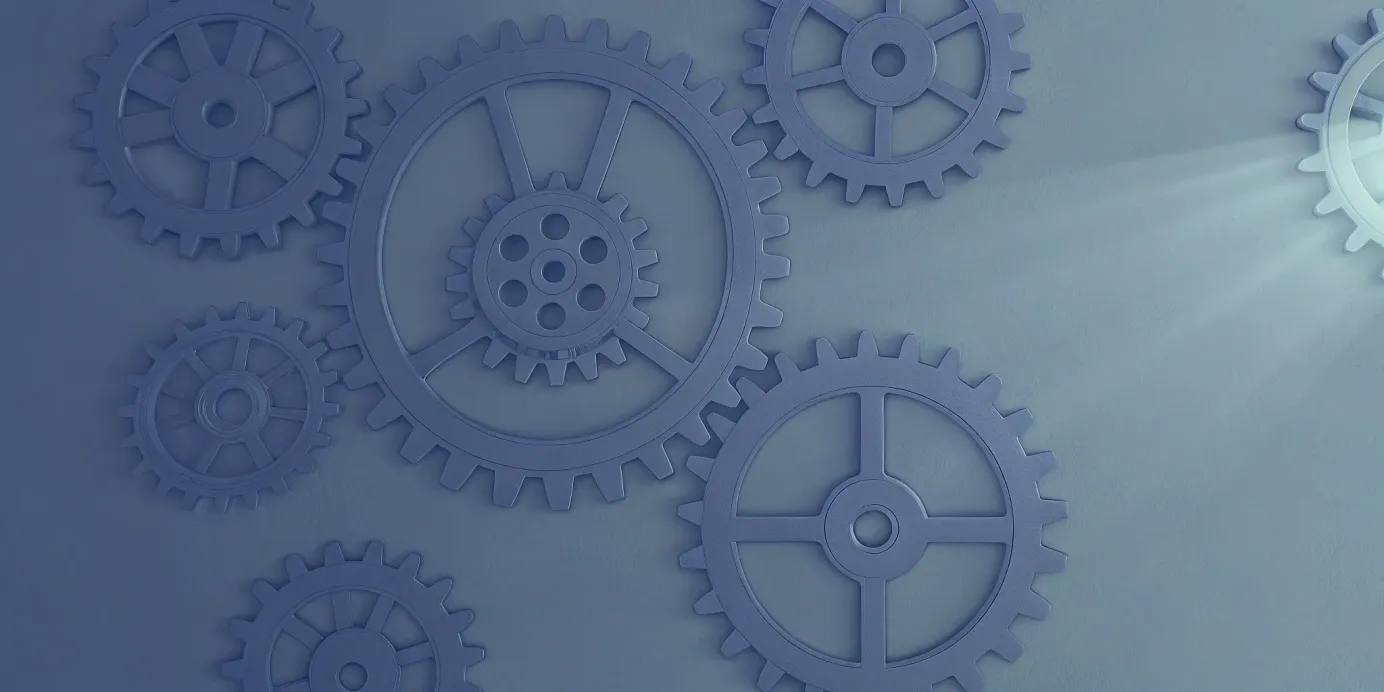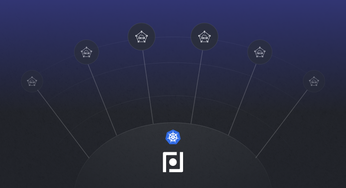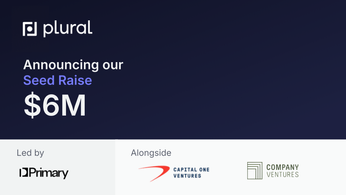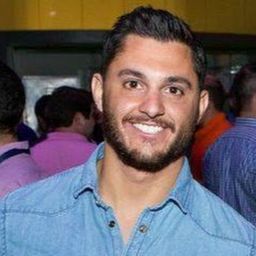
Managing K8s Job Timeouts for Reliable Clusters
Master Kubernetes Jobs with insights on task management, k8s job timeout settings, and best practices for efficient resource utilization and automation.
Table of Contents
Kubernetes Jobs are your go-to for handling finite tasks like batch processing and CI/CD pipelines. But what happens when a job hangs indefinitely, eating up precious cluster resources? This guide dives deep into k8s job timeout configurations, giving you practical strategies to set deadlines, manage failures gracefully, and keep your Kubernetes workflows running smoothly. We'll cover everything from YAML settings to handy command-line tools, so you can master timeouts and boost your cluster's efficiency.
In this comprehensive guide, we'll explore the intricacies of Kubernetes Jobs, offering practical insights and actionable steps for creating, configuring, and managing these ephemeral workloads. We'll delve into key concepts such as parallelism, completions, and back-off limits, empowering you to fine-tune your Jobs for optimal performance and reliability. Whether you're a seasoned Kubernetes administrator or just starting out, this guide will equip you with the knowledge to leverage Kubernetes Jobs effectively.
Unified Cloud Orchestration for Kubernetes
Manage Kubernetes at scale through a single, enterprise-ready platform.
Key Takeaways
- Use Kubernetes Jobs for finite tasks: Jobs excel at managing short-lived processes like batch jobs, backups, and CI/CD steps, unlike long-running workloads like Deployments. Configure completions and parallelism for precise control over execution.
- Configure Jobs for reliability and efficiency: Parameters like backoffLimit, activeDeadlineSeconds, and resource requests/limits fine-tune resource usage and ensure predictable task completion. Automate cleanup with ttlSecondsAfterFinished.
- Monitor and troubleshoot Jobs with kubectl and specialized tools: Inspect Job status and pod logs using kubectl commands. Integrate monitoring solutions like Prometheus and Grafana for comprehensive insights and proactive issue resolution.
What are Kubernetes Jobs?
Definition and Purpose
Kubernetes Jobs manages the execution of finite tasks within your cluster. Think of them as project managers for short-lived processes. Once the defined task is completed, the Job is finished. Jobs are ideal for tasks with a clear start and end, such as batch processing, data transformations, or running reports. A simple example is a script that processes a set of images and then exits. For more complex scenarios, Jobs can manage multiple pods in parallel to expedite completion.
Jobs vs. Other Workloads
The key differentiator between Jobs and other Kubernetes workloads is their lifecycle. Deployments, StatefulSets, and DaemonSets are designed for long-running applications, ensuring continuous availability and scaling. Jobs, however, are specifically for finite tasks. They launch one or more pods, execute the defined task, and then terminate. This makes them well-suited for tasks that don't require persistent operation. For instance, a Kubernetes Job is a perfect fit if you need to run a daily database backup. It spins up a pod, performs the backup, and then completes, freeing up cluster resources.
How Kubernetes Jobs Work
Pod Management
Kubernetes Jobs orchestrate tasks by creating and managing Pods. A Pod, the smallest deployable unit in Kubernetes, encapsulates one or more containers. Consider a Pod a single instance of your application or task. A Job can spin up one Pod for straightforward tasks or multiple Pods for parallel processing, distributing the workload, and speeding up completion. If a Pod within a Job fails, the Job controller automatically restarts it, ensuring task completion unless it hits a specified retry limit. This automated management and recovery simplifies operations and ensures resilience.
Job Lifecycle and Completion
A Kubernetes Job follows a defined lifecycle, from creation to completion or failure. You control this lifecycle with several key configuration options. The .spec.completions field determines how many Pods must be successfully finished for the Job to be considered complete. This is useful for running multiple instances of the same task and requiring only a subset to succeed. The .spec.backoffLimit field sets the number of retry attempts for a failing Pod, handling transient errors and preventing premature Job failure. The .spec.activeDeadlineSeconds field sets a time limit for the entire Job. If the Job doesn't finish within this limit, Kubernetes terminates it, preventing runaway processes and excessive resource consumption. These parameters offer granular control over Job execution and resource management.
Key Kubernetes Job Configurations
Fine-tuning your Kubernetes Jobs ensures efficient resource utilization and reliable task execution. Let's explore some key configuration options:
Parallelism and Completions
Kubernetes Jobs offers granular control over parallel execution. The .spec.parallelism field dictates how many Pods can run concurrently. Setting this value to 1 ensures sequential processing, while higher values enable parallel task execution. For instance, setting .spec.parallelism to 5 allows up to five Pods to run simultaneously. The .spec.completions field specifies the number of successful Pod completions required for the Job to be considered finished. This is useful for tasks that need to be performed a specific number of times, regardless of the total number of Pods created. For example, if you need a task to run successfully five times, set .spec.completions to 5.
Backoff Limits and Failure Handling
Jobs inherently handle transient failures by automatically restarting failed Pods. The .spec.backoffLimit field controls the maximum number of restart attempts. Once this limit is reached, the Pod is marked as failed, and the Job may or may not be considered failed, depending on the .spec.completions setting. You can further refine the restart behavior using the restartPolicy within the Pod's specification. Setting it to Never prevent any restarts while OnFailure restarts the Pod only if it exits with a non-zero exit code.
Timeouts and Deadlines
Managing timeouts and deadlines for your Kubernetes Jobs is essential for preventing runaway processes and ensuring efficient resource utilization. Let's explore how to set time limits for jobs and discuss some alternative solutions for more granular control.
`activeDeadlineSeconds`
The .spec.activeDeadlineSeconds field in a Job's specification sets a global time limit for the entire Job execution. If the Job doesn't complete within the specified number of seconds, Kubernetes marks it as failed. It's important to understand that activeDeadlineSeconds doesn't automatically kill the running pods; it simply stops further retries and sets the Job's status to failed. You'll need to implement additional mechanisms to terminate the pods if necessary. For more details on Job completion and lifecycle management, refer to the official Kubernetes documentation.
Alternative Timeout Solutions
While activeDeadlineSeconds provides a basic timeout mechanism, it has limitations. It doesn't allow for per-retry timeouts or actively terminate running pods. Here are a couple of alternative approaches for more fine-grained control:
Using the `timeout` Utility
A straightforward solution is to use the GNU timeout utility within your container's command. This utility lets you specify a time limit directly for the command being executed. If the command exceeds the specified duration, timeout will terminate the process. This approach provides precise control over individual commands within your Job's pods, offering a more granular timeout mechanism than activeDeadlineSeconds.
Setting `activeDeadlineSeconds` in the Pod Spec
Another approach involves setting activeDeadlineSeconds within the pod's specification inside the Job template. This sets a time limit for each individual pod created by the Job. If a pod doesn't complete within the specified time, Kubernetes will terminate it. This method provides more granular control than the Job-level activeDeadlineSeconds, allowing you to manage timeouts at the pod level.
Per-Retry Deadlines and Workarounds
Kubernetes Jobs don't offer a built-in way to set individual timeouts for each retry attempt. The activeDeadlineSeconds setting applies to the entire Job duration, overriding any retry logic defined by backoffLimit. If you need per-retry deadlines, you'll have to implement workarounds within your container logic. One approach is to incorporate timeout logic within your application code, ensuring each retry attempt adheres to a specific time limit. You could also use a wrapper script that manages retries and enforces timeouts for each attempt. While these workarounds require additional effort, they provide the flexibility needed for complex scenarios requiring granular timeout control. For further discussion and potential solutions, see this Server Fault discussion.
Resource Allocation
Each Pod within a Job requires resources like CPU and memory. You can define resource requests and limits using the resources field within the Pod's specification. Requests specify the minimum resources a Pod needs to schedule, while limits define the maximum resources it can consume. Proper resource allocation ensures that your Jobs run efficiently without starving other workloads.
Using `LimitRanges`
`LimitRanges` act as guardrails for resource allocation within a namespace. They don't reserve resources but establish boundaries for resource requests and limits. This ensures that individual pods don't over-consume resources or request too little, leading to instability. Think of `LimitRanges` as setting the "minimum acceptable behavior" for resource usage. If a pod's resource requests or limits fall outside the defined range, it won't be scheduled. This is particularly useful in multi-tenant clusters or when onboarding new teams, ensuring predictable resource usage patterns. For example, a `LimitRange` can specify that all pods in a namespace must request at least 0.1 CPU and no more than 1 CPU. This prevents runaway resource consumption and ensures fairness across deployments. For more details, see the Kubernetes documentation on LimitRanges.
Using `ResourceQuotas`
`ResourceQuotas` enforce hard limits on the total amount of resources consumed within a namespace. Unlike `LimitRanges`, which constrain individual pods, `ResourceQuotas` manage aggregate resource consumption. This is crucial for preventing resource starvation in shared clusters. Imagine multiple teams deploying applications into the same namespace. Without `ResourceQuotas`, one team could inadvertently consume all available CPU, impacting other applications' performance. A `ResourceQuota` can limit the total CPU, memory, and storage requested or used within a namespace, ensuring fair distribution and preventing any single application from monopolizing the cluster. To learn more about practical applications of `ResourceQuotas`, check out this guide on Kubernetes Resource Quotas and Limit Ranges.
Automatic Cleanup with TTLs
To prevent accumulating completed Jobs and consuming unnecessary resources, leverage the ttlSecondsAfterFinished field. This setting automatically deletes finished Jobs after a specified number of seconds. For example, setting ttlSecondsAfterFinished to 3600 deletes the Job an hour after completion. This automated cleanup simplifies cluster maintenance and prevents resource bloat.
Pod Eviction Time
Default Timeout and Behavior
When Kubernetes needs to evict a pod, whether for node maintenance, resource constraints, or other reasons, it follows a specific termination process. First, Kubernetes sends a TERM signal to the containers, prompting applications to shut down gracefully. This allows them to save state, close connections, and perform any necessary cleanup. Kubernetes then waits for a grace period, defaulting to 30 seconds. This is the pod's eviction time. If the container processes haven't exited within this timeframe, Kubernetes sends a KILL signal, forcibly terminating the pod. Understanding this default behavior is essential for preventing data loss and ensuring application reliability during evictions.
Managing Pod Eviction Time in Amazon EKS
In Kubernetes, the pod-eviction-timeout setting governs the graceful termination period. However, this setting isn't directly adjustable in Amazon EKS. This limitation can be problematic for applications needing more than the default 30 seconds for a clean shutdown. AWS offers solutions to manage pod eviction time effectively. The recommended approach involves adding code to your deployments to modify the termination grace period. By setting the terminationGracePeriodSeconds in your pod specifications, you can customize the time allowed for graceful termination. This ensures your applications have sufficient time to shut down without data loss or disruption.
Create and Manage Kubernetes Jobs
This section covers how to define, deploy, and manage Kubernetes Jobs, walking you through YAML configuration, command-line interactions, and best practices.
Essential YAML Configuration
You define a Job using a YAML file that describes the task you want Kubernetes to execute. This file specifies details such as the container image, the commands to run inside the container, and how many times the task should run. A basic Job YAML file looks like this:
apiVersion: batch/v1
kind: Job
metadata:
name: my-job
spec:
template:
spec:
containers:
- name: my-container
image: busybox
command: ["echo", "Hello from Kubernetes Job!"]
restartPolicy: NeverThis YAML defines a Job named my-job that uses the busybox image. The Job runs a single pod that executes the command echo "Hello from Kubernetes Job!". The restartPolicy: Never ensures that the pod isn't restarted if it fails or completes successfully. You'll often define completions and parallelism to control the number of successful pod completions required and how many pods can run concurrently. These settings are crucial for managing parallel tasks effectively.
Timeouts and Deadlines
Configuring timeouts for your Kubernetes Jobs is essential to prevent runaway processes and ensure efficient resource use. Let's explore how to manage deadlines effectively:
`activeDeadlineSeconds`
The `.spec.activeDeadlineSeconds` field in a Job spec sets a global timeout for the entire Job. If the Job doesn't complete within the specified time, Kubernetes marks it as failed. This field doesn't directly kill the running pods; it simply stops further retries and sets the Job's status to failed. For example: apiVersion: batch/v1 kind: Job metadata: name: my-job spec: activeDeadlineSeconds: 300 # 5 minutes template: # ... pod template ... This configuration ensures that `my-job` will be marked as failed if it doesn't complete within five minutes. You can find more details on the `activeDeadlineSeconds` field in the Kubernetes documentation.
Alternative Timeout Solutions
While `activeDeadlineSeconds` provides a global timeout, you might need more granular control, such as per-pod or per-command timeouts. Here are a couple of alternative approaches:
Using the `timeout` Utility
For controlling the execution time of individual commands within your containers, the GNU `timeout` utility is a powerful tool. You can incorporate it directly into your container's command definition: apiVersion: batch/v1 kind: Job metadata: name: my-job spec: template: spec: containers: - name: my-container image: busybox command: ["timeout", "60", "my-long-running-command"] restartPolicy: Never In this example, `my-long-running-command` will be terminated if it runs for longer than 60 seconds. This approach provides fine-grained control over individual commands, regardless of the overall Job timeout. This Stack Overflow thread provides further discussion on using `timeout` with Kubernetes Jobs.
Setting `activeDeadlineSeconds` in the Pod Spec
You can also set `activeDeadlineSeconds` within the Pod spec itself. This provides a timeout specifically for the Pod's lifecycle, independent of the Job's overall deadline. However, this approach is generally less flexible than using the `timeout` utility for individual commands.
Per-Retry Deadlines and Workarounds
Kubernetes doesn't natively support setting timeouts for individual retries. If you need per-retry deadlines, you'll need to implement a timeout mechanism within your container's logic, such as using the `timeout` utility or implementing custom timeout logic within your application code. This Server Fault discussion explores per-retry deadlines and potential workarounds. For more complex timeout scenarios and managing Kubernetes at scale, consider exploring platforms like Plural, which offer advanced features for managing and orchestrating Kubernetes workloads.
Job Management via Command Line
You interact with Jobs using the kubectl command-line tool. To create a Job from your YAML file, use kubectl apply -f <your-job-file.yaml>. For example, kubectl apply -f my-job.yaml creates the Job defined in the previous example. You can monitor its progress with kubectl describe job <job-name>. This command provides details about the Job's status, including the number of successful and failed pod completions. To see a list of all Jobs in your cluster, use kubectl get jobs. This command gives you a quick overview of your running and completed Jobs.
Job Creation Best Practices
Use Jobs for short-lived, finite tasks, not long-running services. Deployments or StatefulSets are more suitable for those. Set the ttlSecondsAfterFinished field to automatically clean up finished Jobs and prevent resource accumulation. This ensures efficient resource utilization in your cluster. Consider your restart policy carefully. restartPolicy: Never is often appropriate for Jobs, as you typically want to handle retries at the Job level rather than the individual pod level. This gives you more control over how failures are handled. For parallel tasks, understand the nuances of completion and parallelism.
Error Handling and Concurrency
Managing how your Jobs handle errors and concurrent execution is key for predictable and efficient operation. Let's break down the crucial settings that govern these behaviors.
Handling Restarts
Kubernetes Jobs have a built-in mechanism for handling transient errors—those temporary hiccups that might resolve themselves on a retry. By default, if a Pod within a Job fails, the Job controller automatically restarts it. This automatic restart behavior is controlled by the .spec.backoffLimit field in the Job spec. This field determines the maximum number of times a Pod will be restarted before it's considered permanently failed. For example, a backoffLimit of 3 means Kubernetes will try restarting the failing Pod up to three times.
After the backoffLimit is reached, the Pod is marked as failed. The Job itself may or may not be considered failed at this point; that depends on the .spec.completions setting, which we'll discuss more in the next section.
Managing Concurrency Issues
When running multiple Pods within a Job, you need to consider how they execute—sequentially or in parallel. The .spec.parallelism field in your Job spec gives you fine-grained control over this. Setting parallelism to 1 ensures that Pods run one after another, in a strict sequence. This is useful for tasks that need to be processed in a specific order or when dealing with resources that aren't concurrency-safe.
Higher values for parallelism allow multiple Pods to run concurrently. For instance, a parallelism of 5 permits up to five Pods to execute simultaneously. This can significantly speed up processing for tasks that can be parallelized. Choosing the right parallelism value depends on the nature of your task and the resources available in your cluster. For more guidance on managing parallelism refer to the Kubernetes documentation.
Using `restartPolicy: Never` for Debugging
While the automatic restart behavior of Jobs is generally helpful, during debugging, it can sometimes obscure the root cause of a Pod failure. In these situations, setting restartPolicy: Never within the Pod's specification can be invaluable. This setting prevents the Job controller from restarting a failed Pod, allowing you to examine its state and logs to understand what went wrong.
This is particularly useful when you're dealing with application-level errors or want to ensure that a failed Pod's environment remains untouched for debugging purposes. Keep in mind that with restartPolicy: Never, the responsibility for retrying failed tasks shifts from the individual Pod to the Job itself. You might need to adjust your Job's .spec.backoffLimit or implement other retry mechanisms at the Job level to ensure task completion. For more context on restart policies, refer to the Kubernetes documentation.
Kubernetes Job Patterns and Use Cases
Single vs. Parallel Jobs
You can configure Jobs to run a single task or to execute multiple tasks in parallel.
Non-parallel Jobs execute a single pod to completion. This pattern is best for tasks that aren't easily broken down, such as installing software on a node or running a one-time data migration. If the pod fails, the Job controller restarts it according to its restart policy until it succeeds or hits its backoff limit.
For tasks that can be divided and processed concurrently, parallel Jobs offer significant performance gains. By distributing the work across multiple pods, you can process large datasets or execute computationally intensive operations much faster. A common example is processing a large CSV file where each pod handles a subset of the data. The Job is considered complete when all of its pods finish successfully.
Indexed Jobs
Assigning Unique Identifiers
Standard Kubernetes Jobs are great for managing multiple instances of the same task, but sometimes you need more granular control and tracking. This is especially true when dealing with large datasets or complex workflows. This is where indexed jobs become invaluable. Indexed jobs let you assign unique identifiers to each pod within a job, enabling you to treat each execution as a distinct unit of work.
Think of it like assigning individual tracking numbers to packages in a shipment. Instead of just knowing the shipment exists, you can track the progress of each individual package. Similarly, with indexed jobs, you can monitor the status and outcome of each specific task within the larger job execution. This is particularly useful for tasks like processing individual files in a large dataset, where each file needs to be handled separately but as part of a coordinated workflow. For a deeper dive into standard Kubernetes Jobs, check out the official Kubernetes documentation.
Example
Let's say you need to process a batch of images. Instead of running a single job for all images, you can create indexed jobs where each job processes a specific image. This approach provides better fault isolation and allows you to pinpoint exactly where issues occur if a particular image fails to process. You achieve this by leveraging the $JOB_COMPLETION_INDEX environment variable that Kubernetes automatically injects into each pod. This variable holds the index number of the pod within the job, starting from zero.
Here’s how a sample Job configuration might look:
apiVersion: batch/v1
kind: Job
metadata:
name: image-processing-job
spec:
completions: 10 # Process 10 images
parallelism: 5 # Run 5 pods concurrently
template:
spec:
containers:
- name: image-processor
image: image-processor:latest
command: ["process-image", "$(JOB_COMPLETION_INDEX).jpg"]
restartPolicy: Never
In this example, the job is configured to process 10 images (`completions: 10`) with 5 pods running concurrently (`parallelism: 5`). The command within the container uses $(JOB_COMPLETION_INDEX).jpg to access the appropriately indexed image file. So, the first pod (index 0) will process 0.jpg, the second pod (index 1) will process 1.jpg, and so on. This dynamic naming allows you to easily scale your processing pipeline without manually configuring each pod. If you're looking for a platform to streamline management of complex Kubernetes deployments, including indexed jobs, check out Plural.
Common Job Scenarios
Jobs excel in scenarios where automation and guaranteed execution are crucial. Common use cases include:
- Batch Processing: Data transformations, log analysis, and other large-scale processing tasks can be efficiently handled by parallel Jobs.
- Backups and Restores: Regularly scheduled backups and on-demand restores are easily managed with Jobs and CronJobs.
- CI/CD Pipelines: Jobs can execute specific steps in a CI/CD pipeline, such as running tests or building container images.
- One-time Operations: Tasks like database migrations, software installations, or infrastructure updates are ideal for single or parallel Jobs.
Work Queues
Kubernetes Jobs are a natural fit for managing work queues. For tasks that can be broken down and processed concurrently, parallel Jobs offer significant performance gains. By distributing work across multiple pods, you can process large datasets or execute computationally intensive operations much faster. For example, consider processing a large CSV file where each pod handles a subset of the rows. The Job is considered complete when all of its pods finish successfully.
This reliability makes Jobs ideal for implementing work queues where tasks need to be executed without manual intervention. For example, imagine a system that needs to process image uploads. A Job could be configured to spin up a pod for each image uploaded, performing resizing, watermarking, and other operations. Even if one pod fails, the others continue processing, and the Job controller can restart the failed pod, ensuring all images are eventually processed. This level of automation and guaranteed execution is a key benefit of using Kubernetes Jobs for work queues.
Scheduled Jobs with CronJobs
For tasks that need to run on a recurring schedule, Kubernetes provides CronJobs. It operates similarly to the cron utility in Linux, allowing you to define schedules using cron expressions. This makes them perfect for automating repetitive tasks.
Typical use cases for CronJobs include:
- Regular Backups: Schedule daily or weekly backups of your application data.
- Report Generation: Automate the creation and distribution of reports on a defined schedule.
- Health Checks: Periodically run health checks on your application and infrastructure.
- Scheduled Maintenance: Perform routine maintenance tasks, such as cleaning up log files or restarting services.
CronJobs provides a powerful mechanism for automating scheduled tasks within your Kubernetes cluster. By combining the flexibility of Jobs with the scheduling capabilities of CronJobs, you can effectively manage a wide range of automated tasks.
Advanced Job Features
Kubernetes Jobs offer several advanced features that provide fine-grained control over job execution and failure handling. These features allow you to define specific criteria for success, manage pod failures effectively, and even suspend jobs temporarily.
Pod Failure Policy
The Pod Failure Policy lets you define how a Job responds to individual pod failures. This is particularly useful for handling specific error conditions or transient issues. You configure the policy within the .spec.podFailurePolicy field of the Job spec. For example, you might want to ignore ErrImagePull errors if you know a specific node in your cluster has intermittent network issues. By specifying an OnExitCodes rule, you can instruct the Job to ignore these specific failures and continue running. This prevents the entire Job from failing due to isolated, recoverable issues. The official Kubernetes documentation offers more detail on how to configure the Pod Failure Policy.
Success Policy
The Success Policy defines the criteria for considering a Job successful, especially helpful when running parallel jobs where not all pods need to complete successfully. The .spec.successPolicy field allows you to specify conditions based on the number of successful pod completions or specific exit codes. For instance, if you're running a distributed testing job and only need 80% of the tests to pass, you can configure the Success Policy to reflect this. This prevents the Job from failing even if some pods encounter errors, as long as the overall success criteria are met. See the Kubernetes documentation for comprehensive information on configuring Success Policies.
Suspending Jobs
Kubernetes allows you to suspend a Job's execution using the .spec.suspend field. Setting this field to true prevents new pods from being created or restarted. This is valuable for pausing jobs during maintenance, troubleshooting, or temporarily halting resource consumption. Suspending a Job doesn't terminate already running pods. To resume the Job, set the .spec.suspend field back to false. The Job controller will then continue its operation. This feature provides greater control over job execution and resource management. The Kubernetes documentation provides further information on suspending jobs.
Monitor and Troubleshoot Kubernetes Jobs
After deploying your Kubernetes Jobs, actively monitoring their progress and troubleshooting any hiccups is crucial. Let's explore how to keep tabs on your Jobs and address common issues.
View Job Status and Logs
Kubernetes provides straightforward commands to check on your Jobs. Use kubectl get jobs for a summary of all Jobs in your namespace, including their completion status. For more detail, kubectl describe jobs/<job-name> offers insights into a specific Job's execution, including pod status and resource usage. Retrieving logs is equally simple; kubectl logs <pod-name> displays the logs of a specific pod within a Job. Since Jobs can create multiple pods, ensure you target the correct pod.
Common Issues and Solutions
Kubernetes Jobs handles transient failures by restarting pods. However, some issues can prevent successful completion. Exceeding the backoff limit is a common problem. If a pod repeatedly fails, Kubernetes increases the time between restarts, eventually reaching the limit. Check your Job's backoffLimit configuration and adjust it if needed.
Resource starvation is another frequent issue. If your cluster lacks resources, pods might fail to start. Use kubectl describe nodes to inspect resource utilization and consider scaling your nodes or adjusting resource requests for your Job's pods.
Application errors within the containers can also cause pod failures. Examine the pod logs using kubectl logs <pod-name> to pinpoint the root cause. Platforms like Plural simplify these tasks with a unified interface for monitoring and troubleshooting across multiple clusters. Plural's dashboard centralizes the view of your Jobs, streamlining issue resolution.

Recommended Monitoring Tools
While Kubernetes offers basic monitoring, specialized tools provide deeper insights. Prometheus, a popular open-source monitoring system, collects metrics from your cluster and allows you to define alerts. Combined with Grafana, a visualization tool, you can create informative dashboards to track key metrics related to your Jobs, such as completion rate and execution time.
Kubernetes Events TTL
Kubernetes Events provide valuable insights into the activities within your cluster. They offer a chronological record of actions, warnings, and errors, essential for auditing, debugging, and understanding the overall health of your applications and infrastructure. However, these events can accumulate rapidly, especially in busy clusters, consuming storage and potentially impacting performance. Managing their lifecycle, specifically by configuring Time To Live (TTL) settings, is crucial for a clean and efficient Kubernetes environment.
Kubernetes retains events for a limited period, typically one hour. This default TTL helps prevent excessive event buildup but might not be suitable for all scenarios. You can adjust the event TTL to balance historical data with storage efficiency. Shorter TTLs suit dynamic environments where older events lose relevance quickly. Longer TTLs might be necessary for compliance or auditing, where retaining a more extensive history is essential. You can configure event TTL cluster-wide or customize it for specific namespaces, providing granular control.
Several tools and techniques help manage Kubernetes Events effectively. `kubectl get events` is the primary command for viewing events within a namespace. You can filter events based on involved resources, event types, or time ranges, making it easier to pinpoint relevant information. For advanced event management, consider event exporters and log aggregation systems. These tools forward Kubernetes events to centralized logging platforms, enabling long-term storage, sophisticated analysis, and correlation with other application logs. Platforms like Plural offer a unified interface for monitoring and troubleshooting, integrating event management directly into their dashboards.
Optimize Job Performance and Security
Optimizing Kubernetes Jobs for performance and security is crucial for efficient resource utilization and maintaining a robust, secure cluster. This involves careful resource management, automated cleanup, and adherence to security best practices.
Resource Management
Define resource requests and limits for each Pod within a Job specification. Requests ensure the Pod has the minimum resources to start, while limits prevent excessive resource consumption. This prevents resource starvation and ensures predictable job execution. For example, set appropriate CPU and memory limits to prevent one Job from monopolizing cluster resources. The resources field within the Pod template allows fine-grained control over resource allocation.
Cleanup and Automation
Automated cleanup of completed Jobs is essential for maintaining a clean and efficient Kubernetes cluster. Use the ttlSecondsAfterFinished field in the Job spec to automatically delete finished Jobs after a specified time. This prevents the accumulation of completed Job objects, which can impact the performance of the Kubernetes control plane. Setting an appropriate TTL ensures resources are reclaimed promptly and reduces clutter. For short-lived Jobs, a shorter TTL is suitable, while longer-running Jobs might require a longer TTL for analysis or debugging.
Scaling for Large Deployments
When dealing with large deployments or batch processing, leverage the parallelism and completions fields in the Job spec. For instance, if you need to process a large dataset, set parallelism to a value that balances resource utilization and processing speed. completions can ensure the entire dataset is processed even if individual Pods encounter transient errors.
Security Best Practices
Security considerations are paramount when running Jobs in Kubernetes. Implement robust security policies to minimize risks. Use Role-Based Access Control (RBAC) to restrict access to Job resources, ensuring only authorized users can manage Jobs. Regularly scan images used in your Jobs for vulnerabilities and use a trusted image registry. Network policies can further enhance security by controlling traffic flow between Pods and namespaces. Integrating security scanning into your CI/CD pipeline helps identify and address vulnerabilities early.
Graceful Shutdown with Linkerd
When managing applications in Kubernetes, ensuring a smooth shutdown process is crucial for maintaining data integrity and preventing disruptions. A graceful shutdown allows your application to finish processing in-flight requests and complete any necessary cleanup before terminating. This is where Linkerd, a service mesh for Kubernetes, comes into play, offering robust mechanisms to enhance the graceful shutdown process.
Using `preStop` Hooks
Kubernetes provides the preStop lifecycle hook, which executes commands within a container just before it receives a termination signal. This hook allows your application to perform cleanup tasks, such as closing database connections or finishing pending operations, before shutting down. Importantly, during the preStop hook execution, the application isn't yet aware of the impending shutdown, providing a window to gracefully handle existing requests. The duration of the preStop hook falls under the pod's terminationGracePeriodSeconds, usually set to 30 seconds. If your preStop hook requires more time, adjust this period accordingly. For a deeper dive into graceful shutdowns in Kubernetes, check out this helpful resource from Learnk8s.
`--wait-before-seconds` and `linkerd-await`
Linkerd extends Kubernetes' graceful shutdown capabilities with additional features. The --wait-before-seconds flag, configurable in your Linkerd proxy settings, introduces a delay before Linkerd starts routing traffic away from a terminating pod. This delay provides a buffer for existing requests to complete, minimizing the chance of errors during the shutdown process. Complementing this, the linkerd-await command waits for a pod to become ready before directing traffic to it. This ensures that the application is fully operational before handling new requests, further enhancing reliability. These Linkerd features work in conjunction with preStop hooks to provide a comprehensive and robust graceful shutdown solution. For practical examples and detailed instructions, refer to the Linkerd documentation.
Kubernetes and Future Trends
Kubernetes has quickly become the standard for container orchestration, but its role in the tech world keeps expanding. Emerging trends point to an even bigger role for Kubernetes, especially in AI and hybrid cloud deployments.
Kubernetes in the Age of AI
The rise of AI is transforming industries, and Kubernetes is essential to this transformation. As businesses adopt AI-driven solutions, they need scalable and reliable infrastructure. Kubernetes, with its powerful orchestration, is perfect for deploying and managing AI agents and applications. A Portworx blog post predicted the increasing use of AI agents will rely heavily on Kubernetes, improving efficiency and saving money.
Several factors drive this connection between Kubernetes and AI. Kubernetes automatically scales resources based on demand, ensuring AI workloads get the compute power they need. Its self-healing capabilities keep these critical applications stable and available. The platform's flexibility also allows seamless integration with various AI tools and frameworks, simplifying complex AI pipeline deployment and management. A robust Kubernetes foundation is becoming essential for organizations using AI.
Kubernetes as a Universal Hybrid Cloud Platform
The hybrid cloud model, combining on-premises infrastructure with cloud resources, is increasingly popular as organizations seek flexibility and cost optimization. Kubernetes is becoming the platform for managing workloads across these environments. Its ability to abstract the underlying infrastructure allows consistent application deployment and management, whether on-premises or in a public cloud. Portworx highlights how Kubernetes is becoming the standard for managing both virtual machines and containers, simplifying hybrid cloud operations.
This universal management simplifies hybrid cloud deployments. Organizations can use Kubernetes to move workloads between on-premises and cloud environments, optimize resource use, and maintain consistent operations. This lets businesses adapt to changing needs and use the best of both worlds—the control of on-premises infrastructure and the scalability of the cloud. With Kubernetes, managing the hybrid cloud becomes much more streamlined. For companies like Plural, specializing in Kubernetes fleet management, this trend reinforces the need for robust, scalable solutions for hybrid cloud environments. Tools like Plural's Operations Console simplify managing complex Kubernetes deployments across multiple clusters and cloud providers, aligning with the growing use of hybrid cloud strategies.
Related Articles
- The Quick and Dirty Guide to Kubernetes Terminology
- The Essential Guide to Monitoring Kubernetes
- Why Is Kubernetes Adoption So Hard?
- Kubernetes: Is it Worth the Investment for Your Organization?
- Alternatives to OpenShift: A Guide for CTOs
Unified Cloud Orchestration for Kubernetes
Manage Kubernetes at scale through a single, enterprise-ready platform.
Frequently Asked Questions
How do Kubernetes Jobs differ from Deployments?
Deployments maintain a specified number of running Pods, ensuring continuous availability. Jobs, on the other hand, run a task to completion and then terminate. Use Deployments for long-running services and Jobs for finite tasks.
What happens if a Pod within a Job fails?
The Job controller automatically restarts the failed Pod up to the limit specified by .spec.backoffLimit. This ensures task completion even in the face of transient errors. After the backoff limit is reached, the Pod is no longer restarted.
How do I run multiple tasks in parallel within a Job?
Use the .spec.parallelism field to specify the number of Pods that can run concurrently. This allows you to distribute the workload and speed up processing for tasks that can be parallelized. The .spec.completions field determines how many Pods need to be successfully finished for the Job to be considered complete.
How do I schedule Jobs to run regularly?
Use CronJobs to schedule Jobs based on a cron expression, similar to the cron utility in Linux. CronJobs automates recurring tasks, such as daily backups or weekly reports.
How can I clean up finished Jobs automatically?
Set the .spec.ttlSecondsAfterFinished field in your Job specification. This automatically deletes finished Jobs after a specified number of seconds, preventing resource accumulation and simplifying cluster maintenance.
Newsletter
Join the newsletter to receive the latest updates in your inbox.










